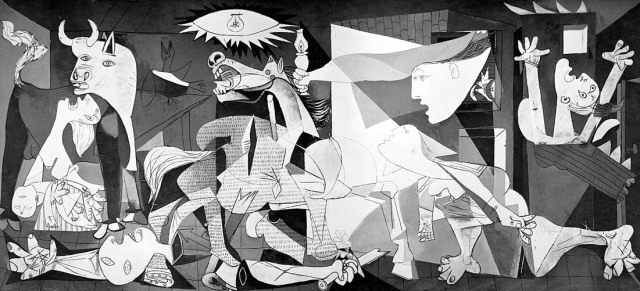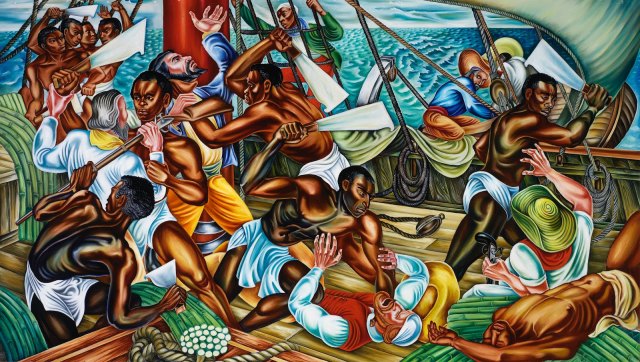
The Spanish Civil War (1936-1939) was a struggle of power between the Republican government and Nationalist insurgents. On April 26, 1937, German forces—allies of the Republicans—bombed the Spanish city of Guernica. Pablo Picasso’s Guernica artifactualizes the devastation of this bombing through its extensive portrayal of senseless violence and women seeking to grapple with the pervasiveness of death; since this depiction of suffering is applicable to any war or war crime, Guernica is a universal, timeless anti-war piece.
Through its striking, incoherent portrayals of violence and suffering, Picasso’s Guernica encapsulates the tragedy and chaos of the bombing of the city of Guernica during the Spanish Civil War. The distorted, overlapping shapes characteristic of Cubist paintings contribute to the artwork’s overwhelming sense of wartime anguish. Although the painting is not true to life, it successfully captures the raw pain relatives of the bombing’s victims experienced. On the left side of the painting, a mother mourns the loss of her son due to the attack. This poignant representation of loss evokes sympathy for all of the disaster’s casualties and mirrors what a devastating blow it was to the citizens of Guernica. In the center of the painting, a horse—representing strength—squeals in agony as it is pierced with a sword. This symbolizes how the unwarranted bombing of Guernica shook the solidarity of an otherwise strong nation. Picasso also utilizes wordplay to contextualize the painting: the light bulb above the horse alludes to the Spanish word for light bulb (bombilla), which sounds like the Spanish word for bomb (bomba). The painting’s overall lack of coherence references the fact that war is completely devoid of meaning; all of this chaos, suffering, and violence ultimately amounts to nothing. Picasso’s painting is so potent because it expresses the senseless destruction of war so perfectly.
Guernica portrays the tragedies of war that are most familiar to noncombatants—most notably women—on the homefront in order to garner more support against war. In “Picasso’s Guernica: A Matter of Metaphor,” art historian Rachel Wischnitzer cites Reinhold Hohl’s claim that “The women are the real victims of Guernica”; I agree with this claim. The woman on the left mourning her dead child quotes Michelangelo’s Pieta, a sculpture of the Virgin Mary holding Jesus in her arms as he dies. Michelangelo’s sculpture represents the most extreme symbol of sacrifice—Jesus giving up his life to save humanity. The juxtaposition of this religiously charged piece with the meaningless violence in the rest of the scene highlights how there was meaning in the story of Jesus’s death to Christians but there is no meaning in the deaths from the bombing. Key differences in the two artworks further reinforce this point. In Pieta, Mary solemnly holds Jesus, sad but accepting of his death; in contrast, the mother in Guernica uncontrollably weeps over her deceased son. Unlike the Virgin Mary, this mother does not have closure because the death of her child was arbitrary and meaningless. Picasso utilizes religious references to contrast how war is not meaningful in the way some deaths are.
The depiction of the ruins of war in Pablo Picasso’s Guernica serves as an emotional plea to end war. Since most of the population was not exposed to the horrors of war firsthand, they relied on depictions in the media in order to get a better sense of these unspeakable atrocities. In addition to causing many soldiers to die, war also afflicts those at home. These afflictions are the easiest for noncombatant citizens to relate to.

